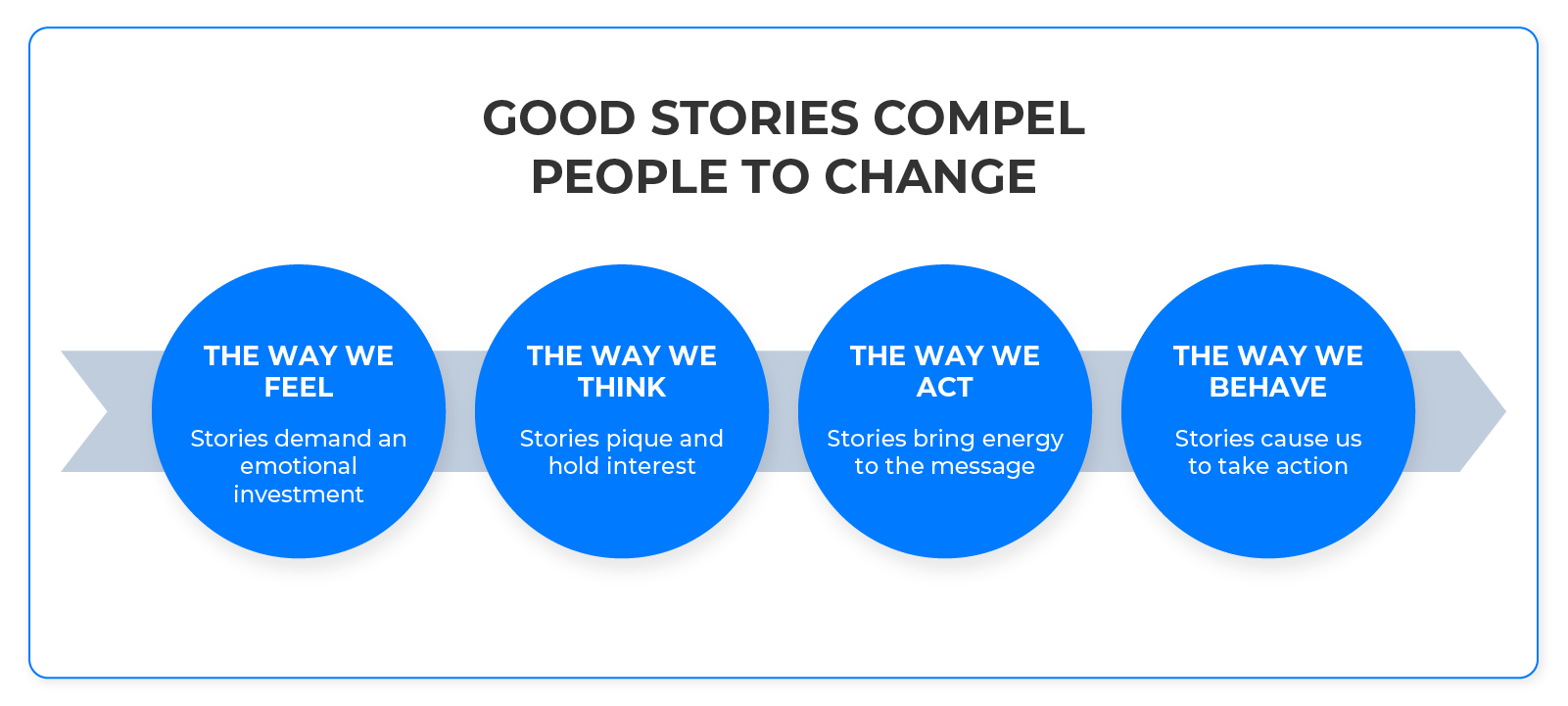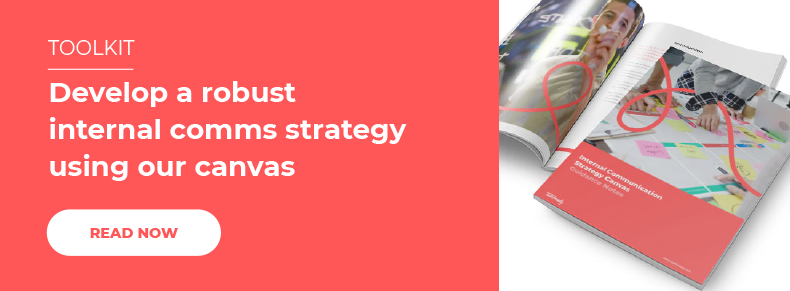When it comes to internal communications, there’s no one-size-fits-all solution. But while there is no single perfect formula for effective communication in the workplace, there are tried and trusted techniques that will boost your reach and impact. Whether it’s the need for a two-way flow of information, clarity of message or frequency of communication, these internal communication best practices will have undoubtedly crossed your radar before now. And that’s because they work. Many will already be included in your internal communication strategy and making their influence felt.
However, we have taken a close look at successful internal communication plans across various businesses and pulled out some common factors that you may not have yet considered. From the amount of information you’re sending out to the media you’re using to convey your messages, you’ll find these simple but effective tips will have an immediate impact on your employee communication.
Tip #1: Mix up your media
Not all the messages you need to convey to the workforce will be exciting. It’s the job of the internal communication team to get the driest of corporate messages out to those that need to know and generate some interest in doing so. When it comes to effective business communication, it’s not what you say; it’s how you say it.
In the current climate, many people are feeling overwhelmed with the number of corporate messages passing on the latest rule changes and policies. But one of the common internal communication mistakes is to churn out lacklustre corporate information using the same unvarying channels. How to keep employees feeling engaged? The trick is the make sure you’re using a good mix of different media - think video, blog posts, interactive chatrooms and real-time notifications – to ensure your employees prick up their collective ears.
Do Try This: Looking for a way to introduce a variety of internal communication channels without blowing your IT budget? An internal communication app will give you instant access to a full range of media types without the need for additional software and the accompanying installation issues.
Tip #2: Connect remote and office-based workers
The dispersed workforce has now become the norm. Some of your employees will be working from home, others office-based, and some may be on the road. And, most likely, by the time you’ve adapted your comms to this situation, it will have already moved on to a new dynamic.
An effective internal communication strategy will meet the diverse needs of all of these employees, wherever they may be. A successful internal communication process is centred on connection. You need to bridge the physical gap between your teams and co-workers, providing a central, social space for them to reconnect. Whether this is an online chat room, a platform for sharing ideas, or a virtual event, enabling this vital connection will substantially impact engagement levels.
Do Try This: A simple way to bring your employees together is to provide a social space for them to connect and share. Internal communication software will deliver a ready-made platform built just for this purpose. Encourage colleagues to open up a dialogue, and you’ll find the physical barriers begin to fall away.
Tip #3: Create an event-full calendar
Sometimes the written word just isn’t enough. Even a video message lacks the personal touch that only face-to-face interaction can achieve. This is when you need to turn your attention to events. Think conferences, live briefings and focus groups – any event where your employees will have the opportunity to meet and interact.
Obviously, with social distancing still impacting our plans, organising live events is still an uncertainty. But that doesn’t mean you can’t replicate them in the virtual world. In fact, the need for strong communication in a crisis has forced us all to look for alternatives to the formal meeting. The importance of internal communication has never been highlighted more sharply than in the last couple of years. And it has shown that the personal, individualised approach is always the most effective communication in business.
Do Try This: A virtual conference won’t cost the business in terms of venues and travelling time but can still present an excellent opportunity to give the messaging some reality and context.
Tip #4: Make sure information is available to all
One of the critical internal communication ideas to include in your strategy is the concept of an open house on information. Too often, businesses operate in silos. They take the view that information is power, and as such, hold essential news and data back from their workforce. If your aim is improving internal communication, then you need to take the opposite view on this fundamental matter.
When information is freely shared and circulated between departments and teams, the outcomes are unvaryingly positive. Not only does it boost understanding and knowledge across the workforce, but it also boosts engagement levels. Many companies have implemented an employee intranet to assist with the free access of information. This can be the solution, but only if it is kept meticulously up-to-date and relevant. One of the critical reasons intranets fail to engage employees is when it becomes a storage area for outdated information.
Do Try This: Consider celebrating knowledge with a ‘lunch & learn’ session. This virtual event is easily implemented via an internal communication platform, and will ensure that knowledge and skills are shared openly across the company.
Tip #5: Look for the story
Storytelling is well-documented to be a successful way of communicating. In fact, it’s scientifically proven that the human brain responds differently to being told a story than to, say, watching a PowerPoint presentation. When it comes to generating effective internal communication, this will transform your engagement levels. Of all the methods of internal communication, storytelling is especially powerful.

[Source: i-Scoop]
Storytelling is particularly compelling when it comes from leaders. People choose to follow leaders because of how they make them feel, and stories are a meaningful way to create strong emotional connections with employees. However, employee-generated stories are also a helpful tool, especially employee experiences. Research from SocialTimes suggests that 92% of people are more likely to trust a recommendation from another person over branded content. In short, your employees are your greatest advocates.
“There’s nothing in the world more powerful than a good story.”
Tyrion Lannister
The Best Speech In The ‘Game Of Thrones’ Finale And Why It Matters To Today’s Leaders
Do Try This: For the internal communication team, running themes or storylines through the communication calendar can provide a linkage that increases the effectiveness of their work.
Tip #6: Recognise and celebrate success
Not many internal communication ideas create engagement faster than public praise. This can be a company-wide success that everyone has had some involvement in. Alternatively, it can be a particular person, team or department singled out for praise. Either way, it’s the strongest way of communicating a company ethos of success.
Celebrating success works in two crucial ways. First, it recognises the achievement of those involved in the outcome, boosting engagement levels through the roof. And secondly, it sends out the message that the company values hard work and success. Those not involved in the successful venture will be inspired to follow in the footsteps of their high-achieving colleagues. Equally, if the senior team ignores a significant accomplishment, this can lead to company-wide disengagement that reaches beyond the individuals concerned.
Do Try This: Choose an employee app that has a recognition platform built-in and ready to go. This will allow you to communicate achievements instantly, publicly praise the participants, and build a culture that celebrates success.
Tip #7: Don’t discount publications
Don’t throw away the company newsletter just yet. The vast majority of companies have a percentage of non-desk-based staff, so there’s still a place for good old print in the internal communication offering. Everyone has their personal preference for internal communication channels, and for some, that means a magazine or newsletter is the best way to get and keep their attention.
With remote working becoming a crucial factor in today’s workplace, print is harder to circulate and deliver. However, that doesn’t mean that the newsletter is obsolete. If you’re aiming to communicate effectively at work, you need to consider all options and preferences. Even if you can’t place a magazine in the staff canteen, you can still deliver news in that familiar format, using digital newsletters to provide a similar communication experience.
Do Try This: An internal communications app will allow you to effortlessly deliver your digital newsletter to every employee without the need for new software or media channels. You’ll also be able to track precisely who is reading it, helping to personalise your messaging even further.
Tip #8: Keep social channels open
Many businesses are wary of social media style apps and platforms. There is a perception that people will become less efficient if they start using them. In addition, some social media platforms have a reputation of being hard to monitor and control. However, times are changing, and these tools are evolving too. Take a look at recent internal communication trends, and it’s clear that social media can no longer be ignored.
There’s a huge wealth of data that says employees who can easily contribute to in-house discussions will be better motivated and engaged and this, in turn, leads to a better employer/employee relationship.
“Listening to your employees will keep you honest. Everybody at work needs to be heard – whatever their contractual relationship is. If you don’t listen to them, you’re walking into a potential minefield and reputational risk today is the real killer for organisations.”
Nita Clarke, Director,Involvement and Participation Association(IPA)
Do Try This: Don’t discount the digital stuff. Check out internal communication platform options and see whether one fits your business model and delivery needs.
Tip #9: Always measure your impact
Like its marketing brother, internal communication is traditionally tricky when it comes to measuring impact on the bottom line. But the simplicity of finding trends and measuring online success through analytics is improving things. Internal communication metrics are no longer a hit and miss affair. In fact, with the right tools to hand, it’s become more of an exact science.
If you’re looking to create truly effective business communication, you need to have a tight handle on what ‘effective’ actually means. The best practice advice is to include metrics and measurements whenever you can – even if they don’t belong to the internal communication function. For example, the HR team should regularly assess employee engagement and recruitment or retention rates, and both these measures are impacted by internal communication’s activity.
Do Try This: Every one of our good internal communication examples includes a strong element of monitoring and measurement. An internal communications app takes all the work out of tracking and reporting, delivering bespoke reports directly into your inbox.
Tip #10: Avoid information overload
Oddly, one of the most valuable roles an internal communication team can play is to restrict information flow. Releasing an endless flood of significant announcements or launching too many engagement campaigns can be confusing and lead to a lack of action or response from your audience. When writing your internal communication definition, never forget that less is more.
It’s vital to control who is sending information, how much is being sent, and how often it is being issued. With their helicopter view of the company, the internal communication department should be able to help the various directorates plan the best time to release their news. Effective communication in the workplace is strongly dependent on the amount of information sent out, as well as the quality of the messaging.
Do Try This: Careful scheduling is the answer to avoiding information overload. Plan ahead as far as possible, creating a digital calendar of announcements, events, launches and changes. The trick is to make sure they don’t overlap.









.jpg)
.jpg)